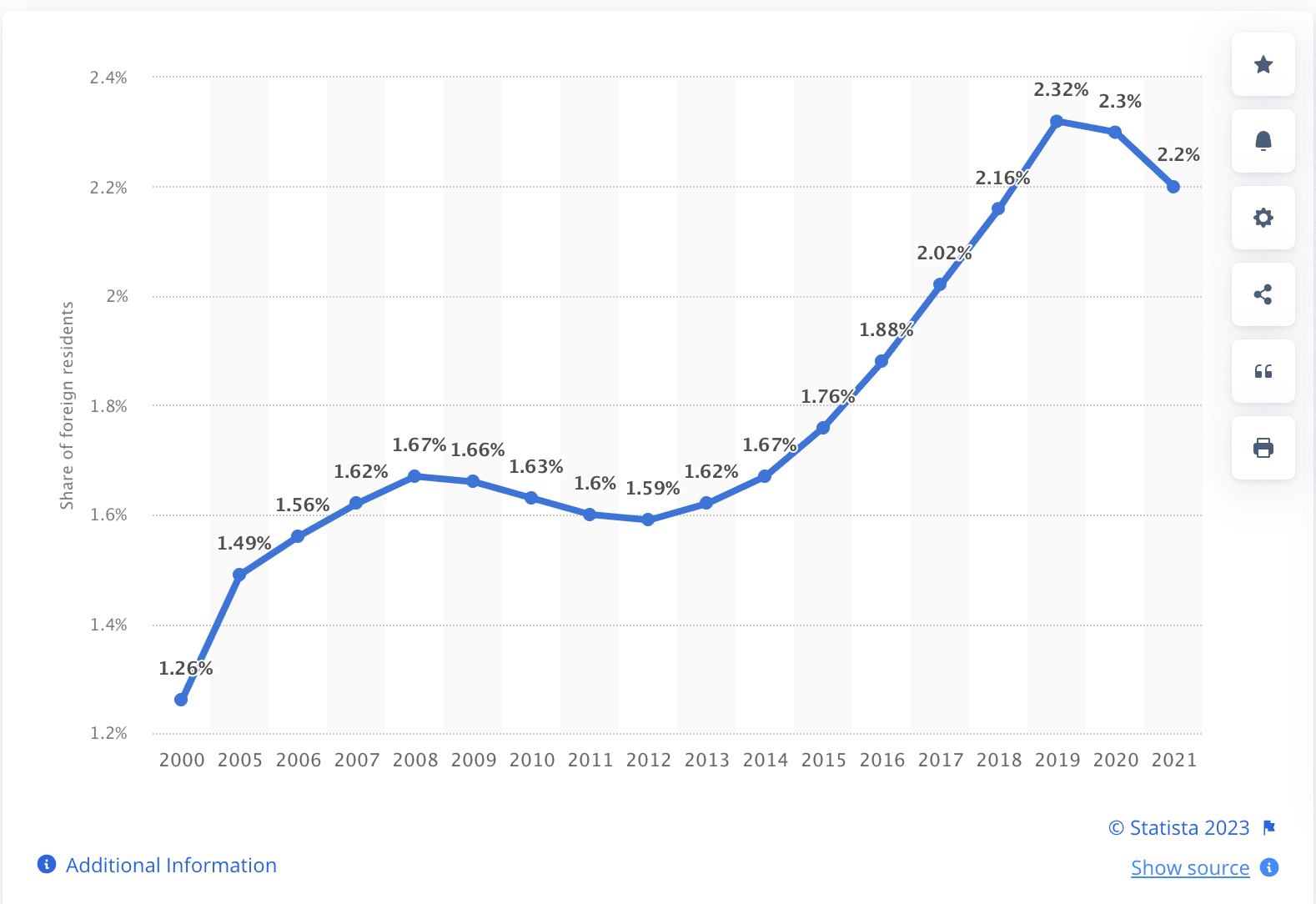Lant Pritchett has written an important article arguing that the political barriers to large amounts of immigration are likely to fall substantially in the coming decades due to declining fertility in rich countries and the consequent need for more workers to support an ageing population.
From a global development point of view, I think this could be one of the most important 'mega-trends', given the large benefits to immigrants of immigration. From a longtermist point of view, I also think it could be one of the most important mega-trends in the coming decades (below AI, pandemic risk, and Great Power conflict). The geopolitical and long-term economic implications of historically unprecedented immigration seem potentially important. E.g. China's population is already declining and fertility is very low. They will likely have to substantially increase immigration in the coming decades. What will this mean for the Chinese political system? What does the fertility decline and immigration mean for trends in very long-run economic growth?
A key passage in Pritchett's piece:
"Figure 1 illustrates to keep the support ratio constant at the 2020 level of 3.08, an additional 101 million elderly need 101*3.08=310 million more labor force aged in 2050. But given the demographic changes that have (mostly) already happened—after all, everyone who will be over 28 years old in 2050 is already born--there will not be 310 million more, but rather 143 million less native-born workers. The “support ratio constant” labor force aged population would have to be 454 million higher than the projected 624 million labor force aged of the Zero Migration scenario. Maintaining a constant support ratio would imply that in 2050 42.1 percent of the labor force aged population would be the result of migration between 2020 and 2050. Put another way, there would have to be about 13 million additional workers per year into these developed regions if the support ratio is to remain constant."
i.e. to retain constant support ratios for the elderly in rich countries, 42% of the working age population would have to be immigrants.
Abstract. A substantial expansion of migration and labor mobility in the rich industrial countries currently seems outside the Overton window, the range of acceptable political discourse. If anything, the general mood seems to favor even greater restrictiveness. I argue that five trends that are underway that could, within a decade or less, bring larger flows of migrants and labor mobility—including a major expansion of time-limited labor mobility—squarely onto the global and domestic political agenda of rich industrial countries





But the pool of jobs is not fixed at all! Globalization show how easily is moving jobs to poor countries and how strong is resistance to immigration. Inmigrant communities often become traditionalists or end up in ghettoes in the receiving countries, while development in poor countries beguings a chain chain reaction of social emacipation.
What is the great welfare story of the late XXth century? Export oriented development. Mass inmigration is not so brigth... New technology allow for export oriented development in a substantial part of the services sector of the West.